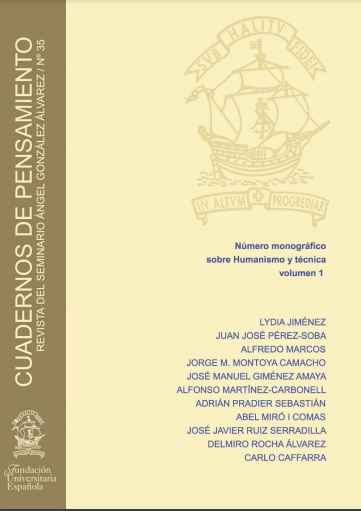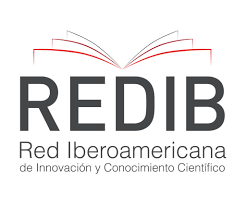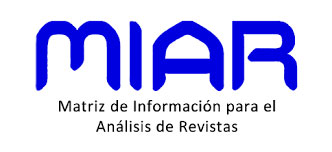On Frankenstein and the automaton of Saint Albert the Great… or why human beauty is not a matter of robots
DOI:
https://doi.org/10.51743/cpe.338Keywords:
social robotics, anthropomorphization, uncanny valley, mechanical beauty, availabilityAbstract
The field of anthropomorphic social robotics is one of the most interesting territories for contemporary philosophical reflection, since it brings together anthropological, ethical and aesthetic issues. Taking as a starting point the medieval legend of the automaton of St. Albert the Great, this paper points out the risks associated with the robotic mimicry of human being when theoretical assumptions about it are deflationary of its complexity. I first present a summary of the “uncanny valley” phenomenon as an aesthetic response of rejection to those robotic designs that devalue human complexity, formally and behaviorally; then we study the most accepted solutions from an engineering point of view, based on designs of appearance according to an abstract rather than an imitative principle; finally, thinking about an artistic example of robotic performativity, we argue the irreducible character of human beauty and creativity against their attempts at robotic imitation.
Downloads
Global Statistics ℹ️
|
561
Views
|
445
Downloads
|
|
1006
Total
|
|
References
Anzulewicz, H. (2011). Magie im Verstândnis Alberts des Grossen. En I. Atucha, D. Calma, C. König-Pralong & I. Zavattero (eds.). Mots médiévaux offerts à Ruedi Imbach (pp. 419-431). Fédération Internationale des Instituts d’Études Médiévales. DOI: https://doi.org/10.1484/M.TEMA-EB.4.00914
Bartneck, Ch., Kanda, T., Ishiguro, H. y Hagita, N. (2009). My robotic Doppelgänger. A critical look at the Uncanny Valley. En RO-MAN 2009 - The 18th IEEE International Symposium on Robot and Human Interactive Communication (pp. 269-276). I.E.E.E. DOI: https://doi.org/10.1109/ROMAN.2009.5326351 DOI: https://doi.org/10.1109/ROMAN.2009.5326351
Blow, M., Dautenhahn, K., Appleby, A., Nehaniv, C., and Lee, D. (2006). Perception of robot smiles and dimensions for human-robot interaction design. En RO-MAN 2006 - The 15th IEEE International Symposium on Robot and Human Interactive Communication (pp. 469-474). I.E.E.E. DOI: https://doi.org/10.1109/ROMAN.2006.314372 DOI: https://doi.org/10.1109/ROMAN.2006.314372
Borgnet, A. (ed.) (1890). B. Alberti Magni Ratisbonensis Episcopi, Ordinis Praedicatorum, Opera Omnia, ex editione Lugdunensi religiose castigata, etc. (5 vols). Ludovicum Vivès, Bibliolam Editorem.
Budd, M. (2014). La apreciación estética de la naturaleza. Antonio Machado Libros. Publicación original de 2002.
Burgar C, Lum P, Shor P, van der Loos, H. (2002). Development of robots for rehabilitation therapy: The Palo Alto VA/Standford Experience. Journal of Rehabilitation Research and Development, 6(37): 663-673.
Compagni, V.P. (ed.) (1992). Cornelius Agrippa. De Occulta Philosophia Libri Tres. E.J. Brill.
Diel, A., Weigelt, S. y MacDorman, K. F. (2022). A meta-analysis of the uncanny valley’s independent and dependent variables. ACM Transactions on Human-Robot Interaction, 11(1), 1-33. DOI: https://doi.org/10.1145/3470742
Diehl, J.J., Schmitt, L.M., Villano, M. y Crowell, Ch. (2012). The clinical use of robots for individuals with autism spectrum disorders: a critical review. Research in Autism Spectrum Disorders, 6(1), 249-262. DOI: https://doi.org/10.1016/j.rasd.2011.05.006
Ishiguro, H. y Nishio, Shuichi (2018). Building artificial humans to understand humans. En Geminoid Studies. Science and Technologies for Humanlike Teleoperated Androids (pp. 21-38). Springer. DOI: https://doi.org/10.1007/978-981-10-8702-8_2
Jochum, E. y Goldberg, K. (2016). Cultivating the uncanny: The Telegarden and other oddities. En Herath, D., Kroos, Ch. y Stelarc (eds.). Robots and Art. Exploring an Unlikely Simbiosis (pp. 149-176). Springer. DOI: https://doi.org/10.1007/978-981-10-0321-9_8
Kang, M. & Halliburton, B. (2020). The Android of Albertus Magnus: a legend of artificial neing. En Cave, S., Dihal, K. y Dillon, S. (eds.). AI Narratives. A History of Imaginative Thinking about Intelligent Machines (pp. 72-94). Oxford University Press. DOI: https://doi.org/10.1093/oso/9780198846666.003.0004
Kant, I. (2003). Crítica del discernimiento. A. Machado Libros. Original de 1790.
MacDorman, K. F. (2019). La Vallée de l’Étrange de Masahiro Mori. e-Phaïstos [En línea], 7(2): consultado el 27 de julio de 2022. URL: http://journals.openedition.org/ephaistos/5333; DOI: https://doi.org/10.4000/ephaistos.5333 DOI: https://doi.org/10.4000/ephaistos.5333
Mahoney, R.M., Machiel van der Loos, H.F., Lum, P.S. y Burgar, C. (2003). Robotic stroke therapy assistant. Robotica, 21(1), 33-44. DOI: https://doi.org/10.1017/S0263574702004617 DOI: https://doi.org/10.1017/S0263574702004617
Marcos, A. La inteligencia artificial y el efecto Toy Story. Proyecto SCIO Red de investigaciones filosóficas José Sanmartín Esplugues. https://proyectoscio.ucv.es/actualidad/la-inteligencia-artificial-y-el-efecto-toy-story-por-a-marcos/
Matarić, M.J., Eriksson, J., Feil-Seifer, D.J. y Winstein, C.J. (2007). Socially assistive robotics for post-stroke rehabilitation. Journal of NeuroEngineering and Rehabilitation, 4(5). DOI: https://doi.org/10.1186/1743-0003-4-5 DOI: https://doi.org/10.1186/1743-0003-4-5
Mori, M. (2012). The uncanny valley (K.F. MacDorman & Norri Kageki, trans.). IEEE Robotics and Automation, 19(2), 98–100. Publicación original de 1970.
Mori, M., MacDorman, K. F. & Kageki, N. (2012). The uncanny valley. IEEE Robot. Autom. Mag. 19: 98–100. DOI: https://doi.org/10.1109/MRA.2012.2192811 DOI: https://doi.org/10.1109/MRA.2012.2192811
Paré, Z. (2012). Le Bouddha dans le robot. Rencontre avec le professeur Masahiro Mori. Gradhiva 15: 162-181. DOI: https://doi.org/10.4000/gradhiva.2393 DOI: https://doi.org/10.4000/gradhiva.2393
Parsons, G. y Carlson, A. (2008). Functional beauty. Clarendon Press. DOI: https://doi.org/10.1093/acprof:oso/9780199205240.001.0001
Penny Cyclopaedia (1835). Charles Knight.
Platt, I. (1822). The book of curiosities;, or, Wonders of the great world: Containing an account of whatever is most remarkable in nature & art, science & literature. Caxton Press.
Pradier, A. (2021). Arte, estética y robots: para una filosofía de la interacción. Humanidades: revista de la Universidad de Montevideo, 10: 173-200. DOI: https://doi.org/10.25185/10.7 DOI: https://doi.org/10.25185/10.7
Pradier, A. (2019). Robótica, estética y antropología: problematizando el diseño antropomórfico. En Chillón, J.M., Martínez, Á. y Frontela, P. (eds.). Hombre y logos. Antropología y comunicación (pp. 305-320). Fragua.
Quintanilla, M.Á. (2017). Tecnología: un enfoque filosófico y otros ensayos de filosofía de la tecnología. Fondo de Cultura Económica. Original de 2005.
Reilly, K. (2011). Automata and Mimesis on the Stage of Theatre History. Palgrave MacMillan. DOI: https://doi.org/10.1057/9780230347540
Resnick, I.M. (2013). A Companion to Albert the Great. Theology, Philosophy, and the Sciences. Brill. DOI: https://doi.org/10.1163/9789004239739
Richardson, K. (2015). An Anthropology of robots and AI. Annihilation anxiety and machines. Routledge. DOI: https://doi.org/10.4324/9781315736426
Saleh, M.A., Hashim, H., Mohamed, N.N., Almisreb, A.A. y Durakovic, B. (2020). Robots and autistic children: a review. Periodicals of Engineering and Natural Sciences, 8(3), 1247-1262.
Shelley, M.W. (1818). Frankenstein; or, the Modern Prometheus (3 vols.) Lackington, Hughes, Harding, Mavoy, & Jones.
Sone, Y. (2017). Japanese robot culture. Performance, imagination, and Modernity. Palgrave Macmillan. DOI: https://doi.org/10.1057/978-1-137-52527-7
Sturlese, L. (1980). Saints et magiciens: Albert le Grand en face d’Hermès Trismégiste. Archives de Philosophie, 43(4), 615-634. https://www.jstor.org/stable/43034376
Tostado, A. (1728). Commentaria in secundam partem Numerorum, cum indicibus copiosissimis (2 vols.). Venetiis ex typographya Belloniana.
Trías, E. (2001). Lo bello y lo siniestro. Ariel. Original de 1982.
Vaughn, R.B.W. (1871). The Life & Labours of S. Thomas of Aquin (2 vols.). Longmans & Co.
Weinryb, I. (2016). The Bronze Objetc in the Middle Ages. Cambridge University Press. DOI: https://doi.org/10.1017/CBO9781316402429
Złotowski, J.A., Sumioka, H., Nishio, S., Glas, D.F., Bartneck, C. and Ishiguro, H. (2015) Persistence of the uncanny valley: the influence of repeated interactions and a robot's attitude on its perception. Frontiers in Psychology 6: 883, 1-9. DOI: https://doi.org/10.3389/fpsyg.2015.00883 DOI: https://doi.org/10.3389/fpsyg.2015.00883
Downloads
Published
How to Cite
Issue
Section
License
The author reserves the rights (copyright) of the published works, and the journal encourages and allows their reuse, from the preprint. The works are published in the electronic edition of the journal under a license "Creative Commons Attribution / Attribution-NonCommercial 4.0 International Public License - CC BY-NC 4.0", and can be copied, used, disseminated, transmitted and publicly exhibited.
The author / s partially transfer the property rights (copyright) of this work for the printed and online editions, provided that:
- The authorship and original source of its publication (magazine, publisher and URL of the work) is cited.
- Are not used for commercial purposes.
- The existence and specifications of this user license are mentioned.
It also declares to have respected the ethical principles of research and to be free from any conflict of interest.
"C.P.E." encourages the authors and the scientific community to the maximum promotion and dissemination of the works in their final version through:
1) Your list of contacts (emails) and social networks (Facebook, Twitter, LinkedIn ...).
2) Institutional repository of your University and public repositories (Mendeley, Cosis ...).
3) Scientific social networks (ResearchGate, Academia.edu, Kudos ...).
4) Personal or institutional website, blog, etc.
5) Google Scholar, ORCID, ResearchID, ScopusID, Dimensions, PlumX ...
6) Printed copies purchased directly and sent to specialists for reading and subsequent citation if appropriate.




















1.png)
1.png)

1.png)





.png)
.png)

.png)
1.png)
1.png)
